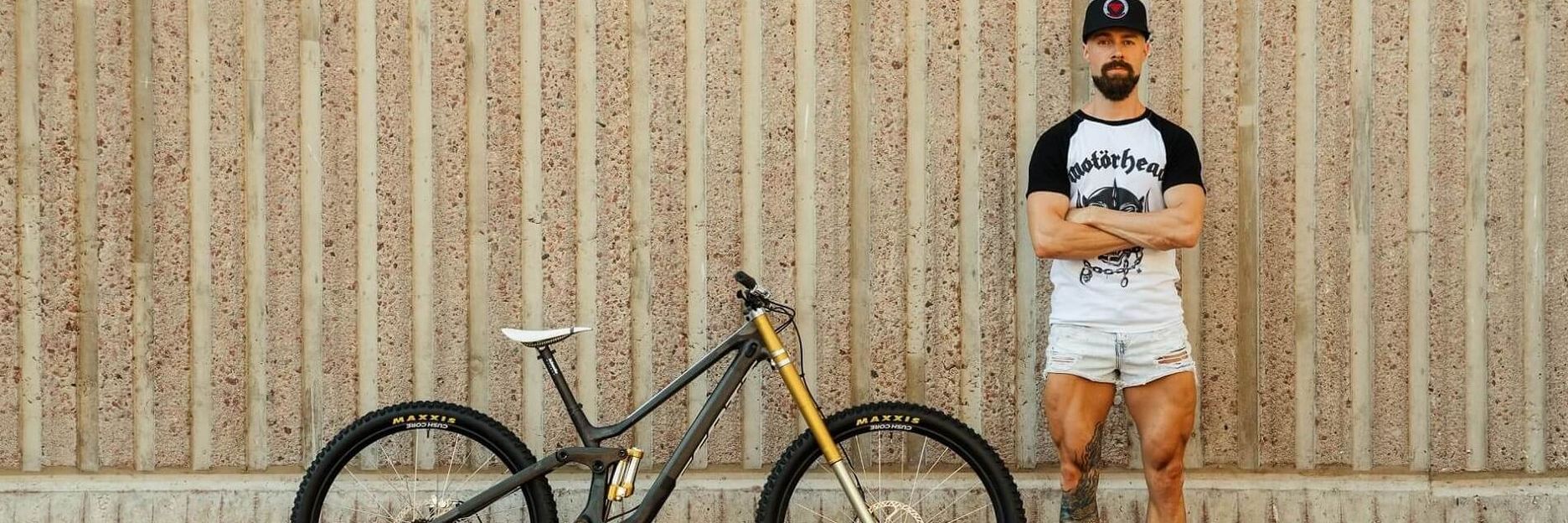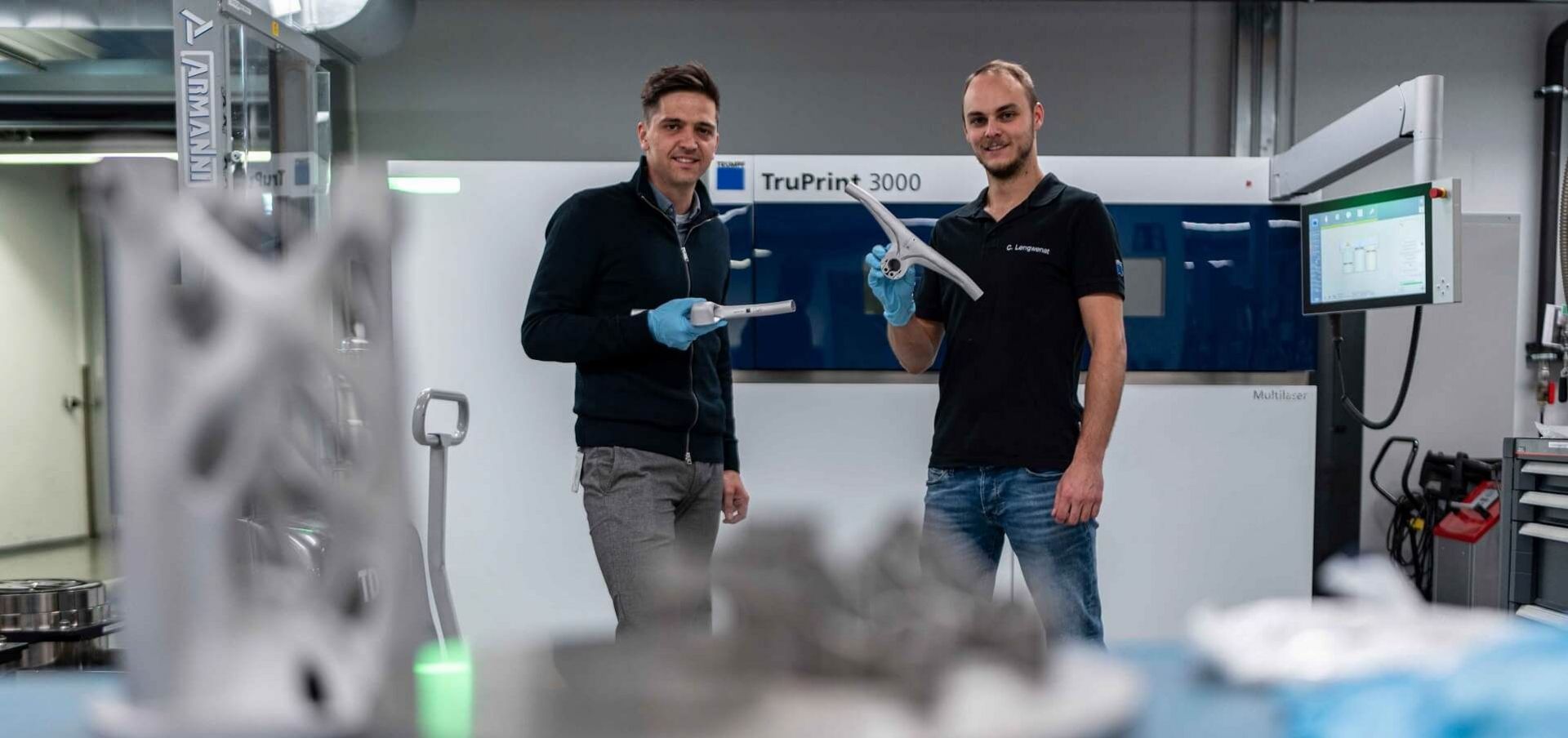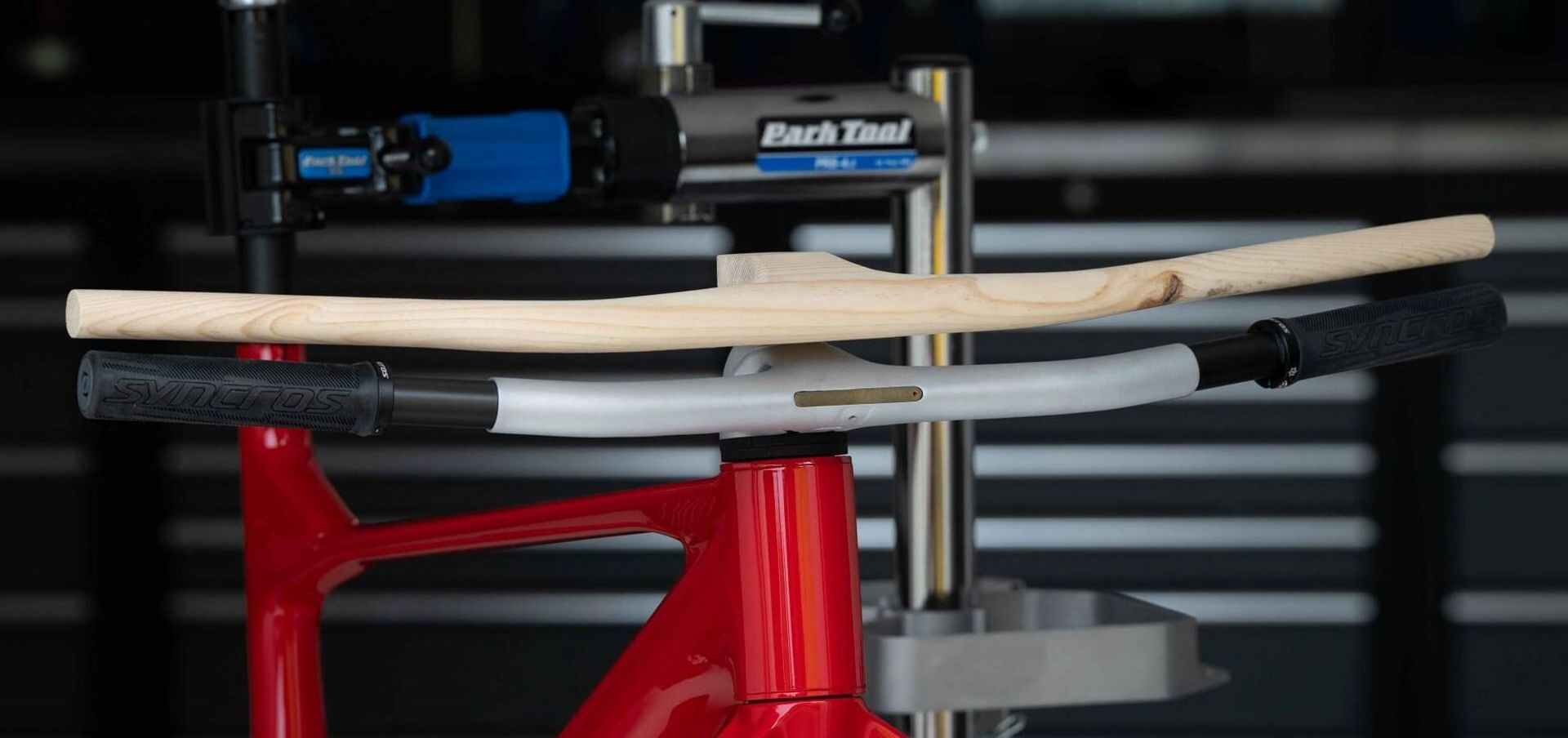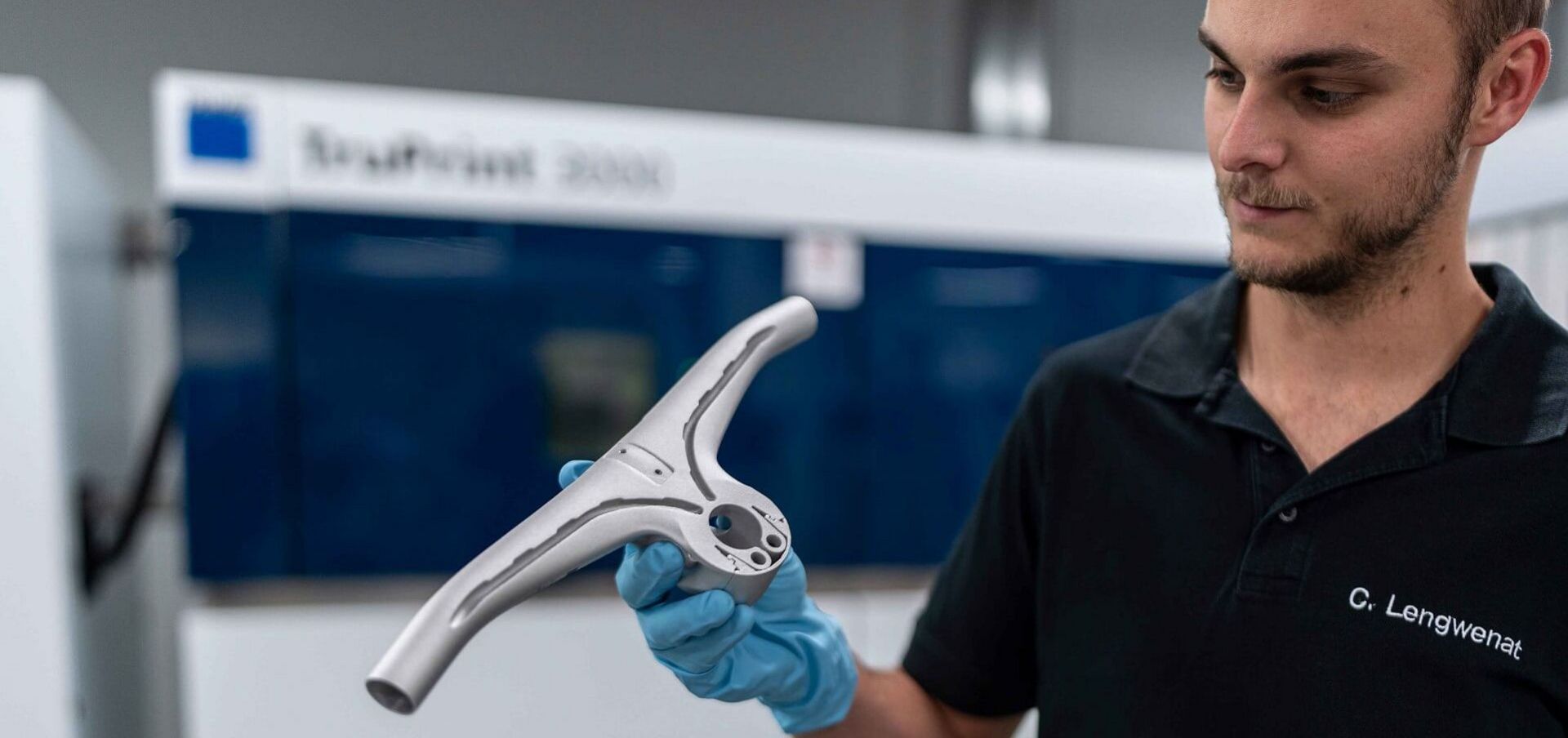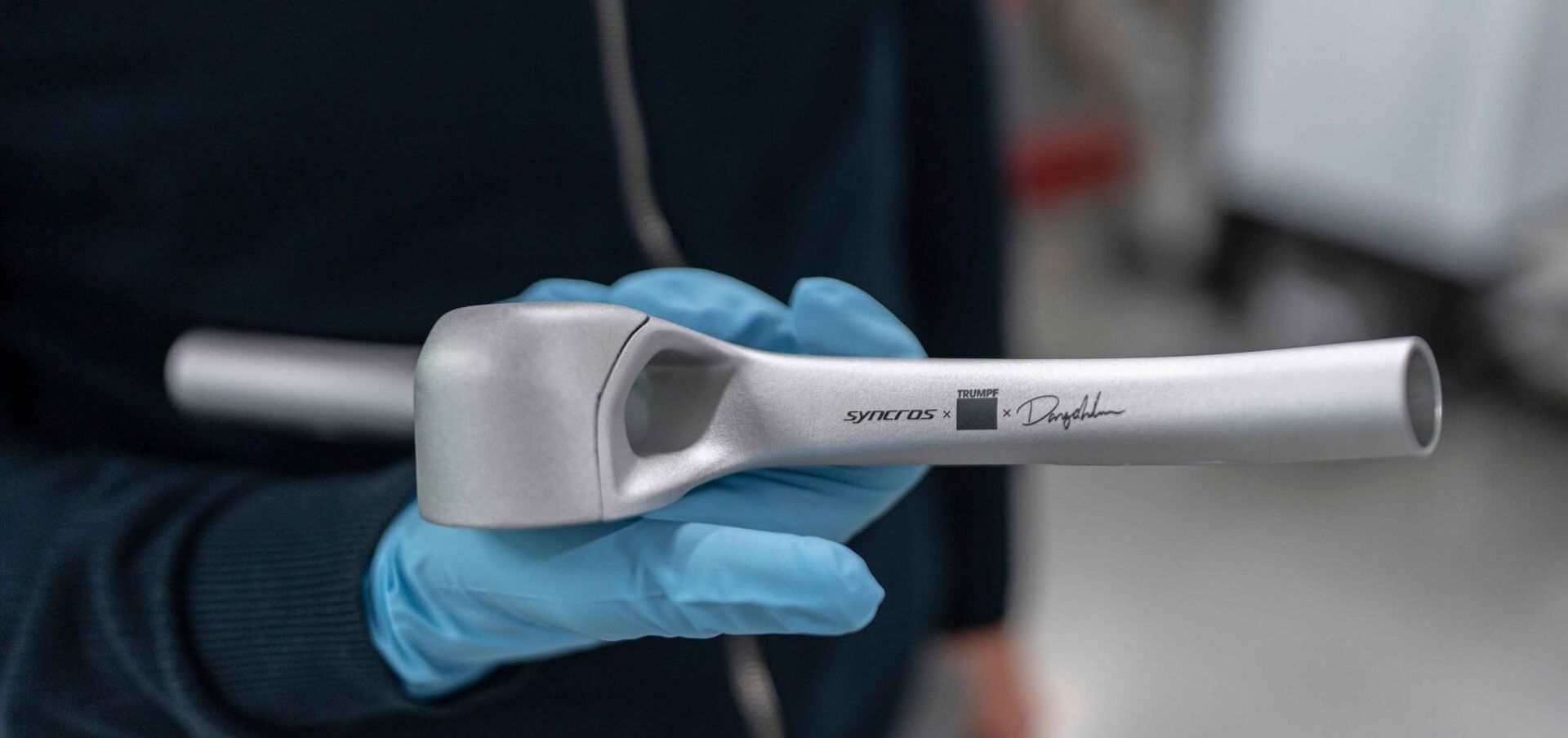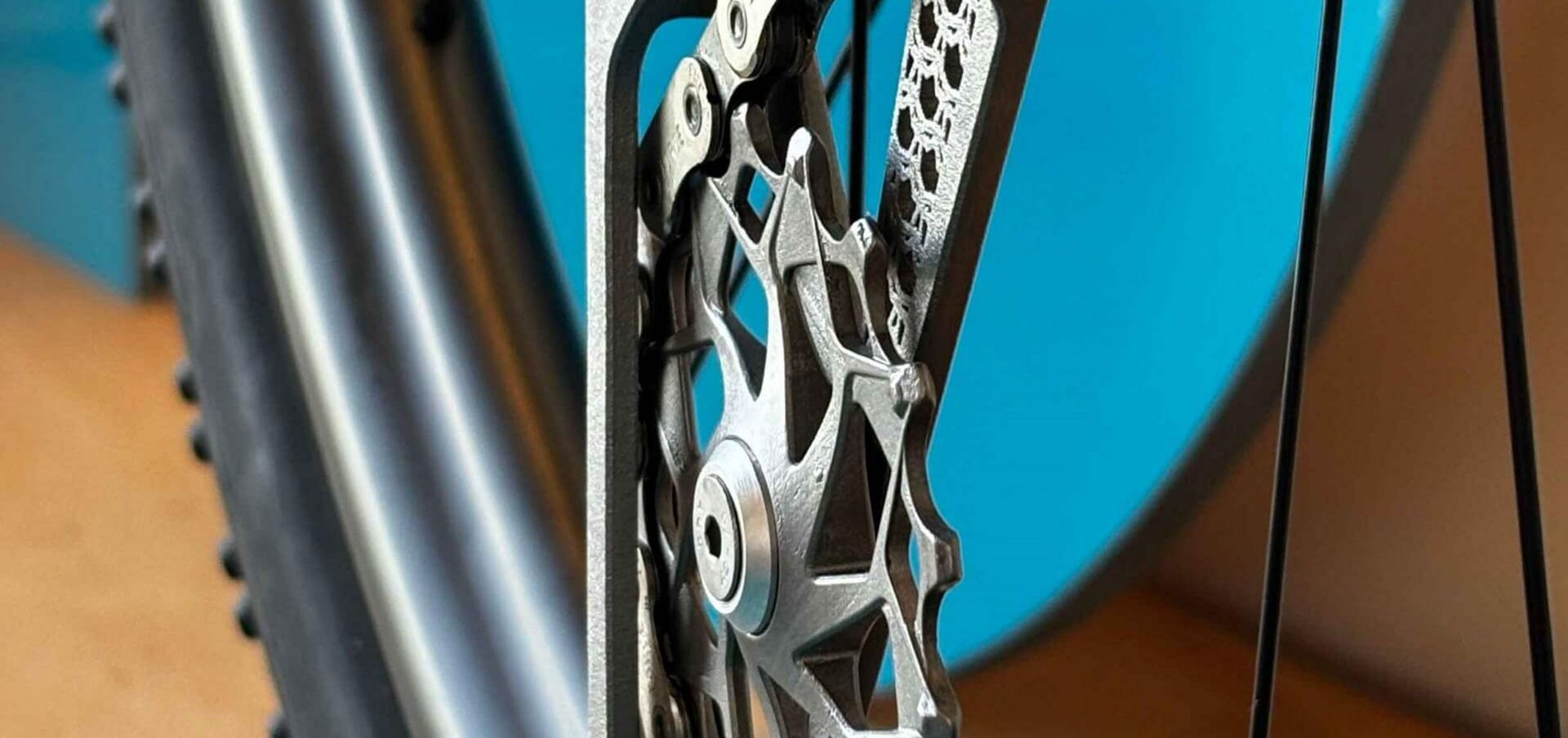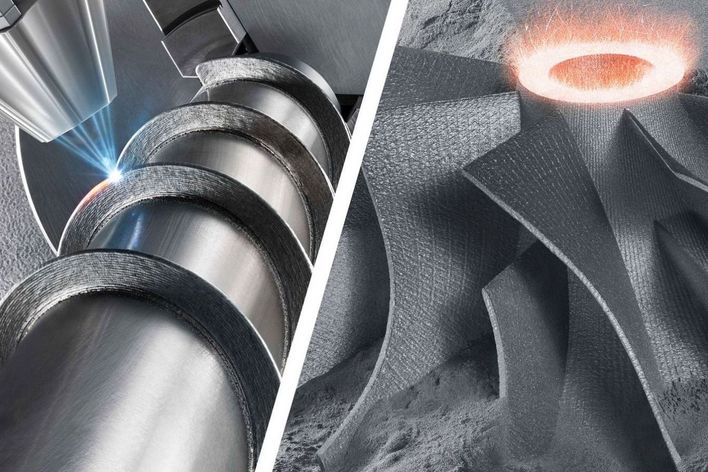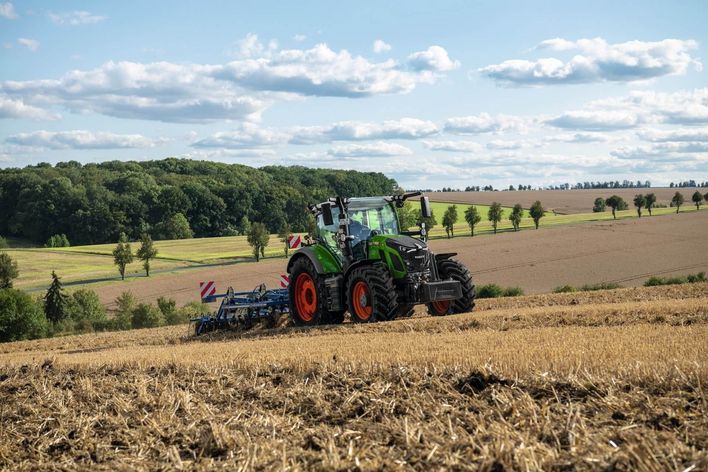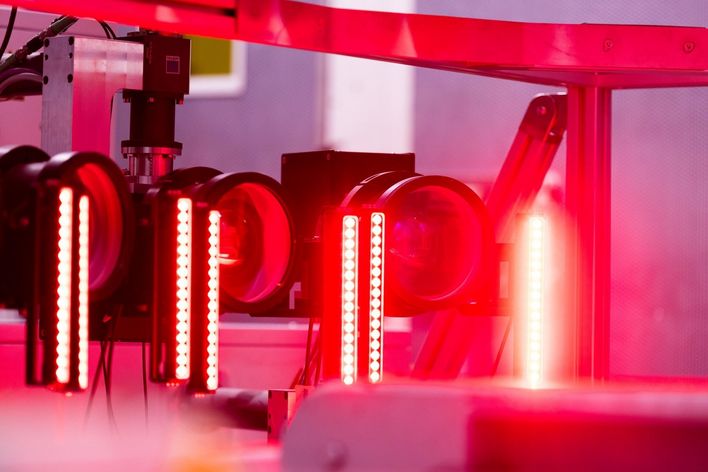Denim waistcoat, shorts, and a bike that is the envy of the cycling world – this is the popular image of extreme bike tuner Dangerholm, also known as Gustav Gullholm. His mission is simply to build bikes, driven by his unadulterated passion for design aesthetics and riding. Drawing on a wealth of ideas and his own perfectionism, the tuner has created bikes that have made him a major star of the bike industry.
One of his ideas was to develop a completely new handlebar. The Norwegian-born mechanic, who lives in Sweden, first built it in wood, explaining: "Compared to what the TRUMPF engineers achieved, my design was pretty primitive." In addition to its futuristic design, the handlebars feature a unit with semi-internal ducts for the brake cables. Additionally, assembly and maintenance should be possible without the need for time-consuming dismantling and bleeding of the brakes. A snap-push connection made this possible, with the cables running through ducts and secured by clips. These clips have undercuts, which would require a very complicated mould to make the handlebar using carbon. 3D printing offers superior process technology and allows for more elegant design solutions.
Prototype development with 3D printing
Maxime Lallemand, Syncros Components Engineer at Scott, a leading brand in the bicycle industry, states: "We have collaborated with Dangerholm for many years. This time, he wanted to work with us to produce a prototype of his vision for the bike of the future for Eurobike 2024 – not just a design concept, but a fully functional mountain bike. The new handlebar concept was a real challenge for us."
The clock started ticking – there were just five months to go until Eurobike. This was a tight turnaround for development, production on the TruPrint 3000 and ISO certification of the handlebars. Scott developer Maxime Lallemand and Quentin Beauregard, MTB Lead Designer at Scott, immediately got in touch with their contacts at TRUMPF who specialise in 3D printing: "Aluminium 3D printing is unbeatable in terms of cost and speed compared to classic carbon/mould construction when it comes to prototype development. In technical terms, 3D printing pushes the boundaries in terms of form and function. This allows us to create a technically flawless handlebar for Gustav, free from any visual distractions.
Two years earlier – knocking on doors in the bike industry
Maxime Lallemand and Quentin Beauregard got to know application developers Chris Lengwenat and his colleague Nicolas Haydt, technology expert for additive manufacturing at TRUMPF, at Eurobike 2022. In their luggage, they had a brake lever, a brake caliper, and a pedal developed by the two TRUMPF experts and printed on a TruPrint using aluminum and titanium. "We dragged our little suitcase from stand to stand," recalls Lengwenat – and Haydt adds: "By the end of the day, we had established numerous new contacts in the development departments of major manufacturers, including Maxime Lallemand. And he also introduced us to bike tuner Dangerholm."
Today – aluminium printing pioneers
A meeting that left a lasting impression – in the lead-up to Eurobike 2024, the collaboration between TRUMPF, Scott, and Dangerholm resumed once again. "The availability of 3D printing with aluminum for components like handlebars is made possible by a new high-strength alloy," explains TRUMPF expert Christian Lengwenat, adding: "Aluminium 6061 has already gained significant popularity in the bicycle sector. And we are currently the only people in Europe with experience in printing with this material."
For TRUMPF's experts, the project provided an opportunity to share ideas with carbon experts from SCOTT Sports, who boast decades of experience in producing high-quality carbon bicycles and components. For Lallemand, it was clear: "We successfully combined our respective expertise in the handlebar project."
Complete design freedom
As 3D printing specialist Lengwenat explains, additive manufacturing imposes no design restrictions: "Unlike conventional methods like milling, metal 3D printing excels in its freedom of form. Tools reach physical limits, whereas powder can be built up into any shape." Haydt adds: "The internal cable ducts of the Dangerholm handlebars can only be realized with 3D printing, and we achieve high stability with low weight. This is what makes aluminum printing so interesting, particularly for the bicycle industry."
Dangerholm, Scott and TRUMPF have finalised the sophisticated handlebar design just in time for Eurobike 2024. Back in Sweden, Dangerholm is delighted with the results. "3D printing is like science fiction – you can literally hold a little piece of the future in your hands."
Additive manufacturing with titanium
Same bike, different supplier – Dangerholm works with Faction Bike Studio from Canada for derailleur components. TRUMPF specialists Lengwenat and Haydt fitted the bike with titanium components on behalf of Faction Bike Studio. These include exposed and vulnerable rear derailleur components like the parallelogram and the cage. The components were printed on a TruPrint 1000 using Ti64 Gd.23, a unique titanium alloy with exceptionally low oxygen content. This has taken stability and design to a new level.

